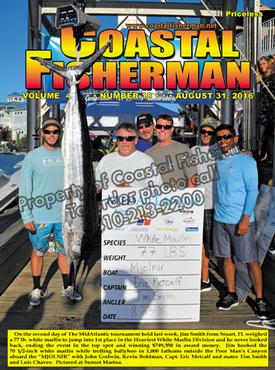


Article by Capt. Steve Katz
 Move over pyrotechnic flares, the LED flare is on the way
Move over pyrotechnic flares, the LED flare is on the way
Pyrotechnic signal flares were patented in 1859 by Martha Coston based on the need for navy ships to signal each other at night, replacing the standard issue signal lanterns used at that time. It seems that we have gone full circle, back to a signal lantern, this time a CREE LED driven by alkaline batteries. This single LED flare, combined with a daytime distress flag meets USCG requirements for visual distress signal, 33 CFR 175.131. You may never need to buy flares again!
The Sirius Signal LED flare, manufactured by Weems & Plath in Annapolis, MD, is the first electronic flare approved to replace the traditional pyrotechnic options. The eVDS (electronic Visual Distress Signal) or sometime referred to as a SOS distress light, costs about $100 and has no expiration date and is powered by off the shelf “C” batteries. The manufacturer indicates the LED flare is visible up to 10 nautical miles for at least 6 hours and can remain illuminated for up to 60 hours. This device emits a flashing SOS signal so it is not confused with other nearby light sources. The LED flare is waterproof, floats upright and is easily activated with a twist of the lens cap, instantly broadcasting the bright white light with its omni-directional horizontal lens.
Compared to traditional flares, the cheapest pyrotechnic flare set costs about $33 and last up to 42 months after manufacturing.
Traditional flares need to be stored clean and dry, then ignited and kept away from people or materials due to their extreme burning temperature, over 1,000 degrees fahrenheit.
Traditional handheld flares and aerial and parachute flares have only a minute of burn time, and therefore, should only be used to direct nearby rescue resources to your location. Traditional flares contain Perchlorate as the principle ingredient and is a highly toxic substance. One improperly disposed flare can contaminate 240,000 gallons of water. In the next 3 years, 30 million of these flares will expire. Only 9% of those flares are likely to be disposed of properly. Many get tossed into the water or sent to the landfill.
If the LED flare is such a good idea, where is the competition? Well, they are at the door and some products may soon meet USCG regulations. Products such as the Odeo MK3 LED flare, Ocean Signals RescueME EDF1 and the North American Survival systems EF-20A-1 LED strobe are already in production and may meet the USCG rules as a substitute for the traditional pyrotechnic distress signals.
The Odeo MK3 LED uses a red colored LED light, as compared to the white light from the Sirius Signal LED flare. Equipped with Lithium iron disulphide disposable batteries, they can produce light for up to 6 hours or 4 hours using traditional AA batteries. Their shelf life is up to 10 years. The Odeo MK3 is very similar in size and shape to the traditional signal flare.
The RescueME EDF1 is lightweight, rugged and submersible to a depth of 30-feet. It looks and feels like a regular flashlight except for the sliding guard over the on/off and test buttons. At the top of the unit there are two bands of 8 high-power red LEDs, along with two on the end. They are extremely bright and form a beam with a 30-degree arc in the horizontal plane. The company claims the LiMnO2 battery pack can produce six-hours of continuous output in economy mode and two hours at full power. While it is not rechargeable, the battery can be detached and easily replaced by the end user.
The EF-20A-1 uses four CREE LEDs to shine at a blinding 200 candelas and the company claims it has a night time visibility of 10 nautical miles. Like many of the other electronic flares, the unit is operated with a simple on/off switch, which makes it easy to test and use when the time comes.
Now for something very interesting. The Greatland Laser Green Rescue Laser Flare takes a different approach to distress signaling than it’s LED-based counterparts. The Green Rescue produces a focused fan laser that can be pointed in the direction of a rescue party (aircraft). The unit is a handheld 5-inch cylinder, like a flashlight and is powered by lithium-ion batteries that can provide 10 hours of use. It is waterproof and made with materials that are ready to stand up to the harsh marine environment. The Green Rescue Laser’s beam can be seen up to 30 miles away at night and 3 to 5 miles during the day. Greatland’s lasers have peep sights along the barrel to direct the green beam, which broadens to a fan shape more than one mile wide at full range. While illegally shining lasers at aircraft has been big news recently, a section of legislation passed in 2012 exempts “an individual using a laser emergency signaling devices to send an emergency distress signal.”
This device is best to attract attention and to guide a nearby rescuer to your exact position. No handheld signal is more efficient at drawing attention or has a longer range in clear air than a laser.
While some of these new devices may allow you to meet USCG requirements and eliminate your traditional flares, you should review your boating and safety requirements and may even decide on a combination of devices to help alert, locate and direct rescue authorities to your position with modern signaling devices.
Captain Steve Katz is the owner of Steve’s Marine Service and holds NMEA, AMEI and NMEA2000 certificates along with ABYC Master Technician certification and factory training from many manufacturers.